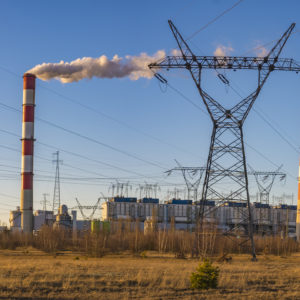Since taking office, President Donald Trump has consistently reiterated his administration’s support for domestic energy. Under Energy Secretary Rick Perry’s leadership, the federal government has rolled back regulations that had placed a significant strain on coal and nuclear generation. Even so, the aging technologies have failed to keep up with market demand, as consumers often push for cheaper and greener options. The details of a plan leaked on Friday show that the administration is committed to using government power to prop up coal and nuclear. However, a plan like the one in the leaked memo is likely to be too little, too late to stop the consumer trend away from these fuels and may come at a steep cost for taxpayers.
According to the plan proposed in the leaked memo, the federal government would use its its power under Section 202 of the Federal Power Act and the Cold War-era Defense Production Act to purchase electricity from coal and nuclear plants for two years.
“Impending retirements of fuel-secure power facilities are leading to a rapid depletion of a critical part of our nation’s energy mix and impacting the resilience of our power grid,” White House spokeswoman Sarah Huckabee Sanders said in a statement, adding that Perry had been asked to prepare “immediate steps” to stop the loss of the plants.
The memo emphasizes the role that coal and nuclear generation play in America’s energy security because on-site fuel storage helps to protect them against supply disruptions.
“The issue before the Department, then, is not whether our Nation’s electric system has operated or is operating at a high level of reliability. Rather, it is whether the Nation’s electric power system is adquately prepared and sourced to withstand a high-impact electricity system disruption caused by an attack, natural disaster, or other incident,” the memo states.
Government purchases are unable to shift consumer opinions, though. Both companies and consumers are seeking renewable energy options. Already 2018 has had a strong start in terms of corporate renewable construction, with 19 major companies announcing deals for 2.48 gigawatts of wind and solar in the first half of 2018, nearly as much as the 2.78 gigawatts built in the entirety of 2017.
Companies cite both declining renewable prices and customer demand as driving the shift.
“We think this is a major trend,” said Lisa Wood, vice president of customer solutions at the Edison Electric Institute, a utility trade group, to the Institute for Energy Economics and Financial Analysis. “Customers are becoming the driver.”
Major details of the plan still have not been filled in, including which plants would be targeted. The attempt to regulate electricity generation at such a granular level is new in American energy markets. While the federal government has at times stepped in in the aftermath of a natural disaster or during a major threat to national security, it has never done so solely for reasons of maintaining a balance of generation types.
Some observers fear that the plan would raise prices for consumers across the country by forcing them to purchase less cost-effective power generated by aging coal and natural plants. Keeping plants on line is becoming increasingly expensive as maintenance costs on aging equipment rise at the same time that low natural gas prices have kept utility rates low across the country.
“The Trump administration would have customers shoulder billions of dollars in costs to support a withering industry that has failed to remain competitive with the abundance of new natural gas, cheap renewable resources, flat demand growth, and growing energy efficiency,” Robbie Orvis, policy director at Energy Innovation, wrote in a Friday statement. “What’s being discussed here is disgraceful and threatens to undermine the very foundation of competitive electricity markets.”
Critics have also argued that the country’s energy security is better preserved by changes to the structure of the electric grid. Shifting from a centralized grid to one that is more dispersed, like those proposed for the adoption of wind and solar, would make it less vulnerable to attack. The electric grid is most vulnerable at the transmission, rather than the generation stage.
But supporters, like Paul Bailey, President and CEO of the American Coalition for Clean Coal Electricity, believe that the actions of the administration are an essential short-term move to preserve the power grid as fuel sources fluctuate.
“We are pleased the administration is taking steps that will help ensure that our nation’s electricity grid is resilient and reliable,” said Bailey. “Almost 40 percent of the nation’s coal fleet has shut down or is expected to close. The loss of fuel-secure electricity sources, especially coal-fueled power plants, pose an increasing threat to the power grid, as well as to national security. We look forward to working with the administration and other policymakers on both near-term and longer-term measures to ensure that the grid is not threatened by the loss of even more fuel-secure resources.”
The Department of Energy studied grid reliability last summer, concluding that electric reliability is not immediately at risk, but also proposing support for coal and nuclear. This plan, which claimed that they were essential for the resilience of the electric grid, was rejected by the Federal Energy Regulatory Committee earlier this year. A second investigation into grid resiliency is currently ongoing.
At this stage, the plan has many large holes that remain to be filled in in the coming weeks. Already, several different environmental and green energy groups have vowed to contest the finalized rule. Doubts also exist over whether the president can override FERC’s previous decision that programs to bolster the strength of coal were unneeded.

